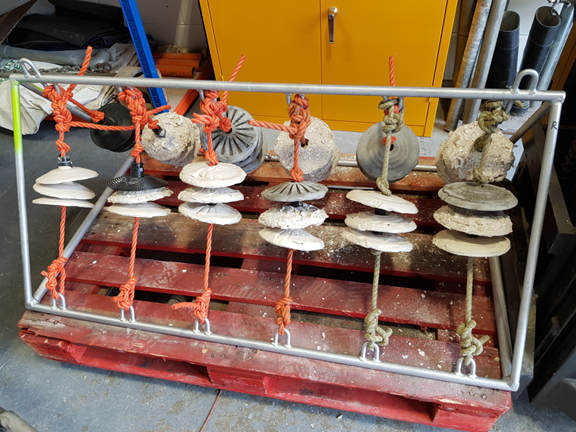Habitat Restoration
Here at Exo Environmental, we have extensive experience in conducting surveys associated with habitat restoration.
A range of surveying has been undertaken throughout the UK which has provided vital information to national bodies such as Natural England, the Environment Agency and the Broads Authority to inform them on the best practices to maintain and restore important habitats.
Providing solutions via management, soft engineering and through experimental deployment of the newest designs in restoration, Exo Environmental has been involved with projects throughout the Offshore, Terrestrial and Intertidal environments, everything from Peatland rewetting restoration to Oyster beds in the River Colne.
Brushwood Barrier Completed on Cobmarsh Island, Mersea
Oyster Discs Set on Frame Pre-Deployment.
CASE STUDIES:
-
Using funding from the Seafood Innovation Fund, Exo Environmental worked alongside Brightlingsea Harbour Commissioners to develop and deploy novel oyster spatting discs. These discs were examined to determine whether their use could help to repopulate the native oyster population in the River Colne, which has a rich cultural and historical affiliation with oystermen and oyster fishing.
Using recycled aggregate materials and broken oyster shells with textured surfaces, Exo developed novel spatting discs, aimed at increasing bio-receptivity when compared to traditional plastic discs.
The discs were deployed at numerous locations in Brightlingsea Harbour alongside traditional plastic discs to determine their success against the industry standard. Different textured designs and combinations with lime and shell additions were also studied to determine the best configuration to attract oyster spat.
The results of the study were promising with a large amount of colonisation, however very few oysters were found on either the new Exo designs or the traditional plastic discs due to an overall poor yield during this particular season.
-
As part of the EU Interreg Using Sediment as a Resource (USAR) project, Exo Environmental supported Brightlingsea Harbour Commissioners in their application for a marine licence to dredge the harbour and re-use the sediment to restore a series of borrow pits.
These pits were originally dug out in decades gone by in the surrounding saltmarsh to build up the sea wall defence. However, modern research has demonstrated that saltmarsh already provides an excellent level of natural flood defence, as well as boasting high biodiversity.
Exo conducted numerous environmental studies to provide the Marine Management Organisation (MMO) with relevant data to support the application. These included benthic ecological surveying, water flow and modelling, water quality monitoring before, during and after the dredging campaign to monitor any change, as well as vegetation and bird surveys.
Following the successful licence application, Exo acted as primary consultant and ecological clerk during monitoring of the project to ensure the appropriate environmental protection measures were put in place.
Several subsequent dredging campaigns were conducted, which helped to fill the pits with dredged material. After time this material consolidated, and natural seral succession took place with pioneer salt marsh species beginning to colonise it. Vegetation surveys conducted throughout the project lifetime categorised the change from bare mud to saltmarsh communities, helping to document and evidence the benefits of restoring saltmarsh habitats.
-
In September 2021, Exo were involved in an exciting project on Mersea Island, Essex. Exo worked to install over 140m of brushwood sea defences along Cobmarsh Island and Packing Shed Island in the Mersea harbour approaches.
The work formed part of a wider scheme of nature-based solutions and utilising natural processes for low-cost sea defence. The Mersea Harbour Protection Trust employed Exo based on our explicit experience of brushwood work and working with nature projects, such as USAR and SARCC https://www.sarcc.eu.
The purpose of these brushwood installations is to trap and control the movement of dredged sand and gravel. This function is crucial, as without the brushwood the prevailing wind and tide would entrain the sand and cover vulnerable and special saltmarsh habitats.
This dredged material has now been placed within retaining brushwood structures, as part of beneficial use of dredged material, to recharge areas lost to erosion.
The placement of the material, which has come from capital dredging at Harwich, occurred over a few days in November 2021 when the spring tides allowed the large Hopper dredger Sospan Dau to fill the compartments with the material, using a rainbow discharge/placement method.
It is now over to the brushwood to keep this sediment in place and stabilise it enough to prevent it covering valuable saltmarsh habitat and provide suitable substrate for beach nesting birds, which has been lost over the years due to coastal erosion.



